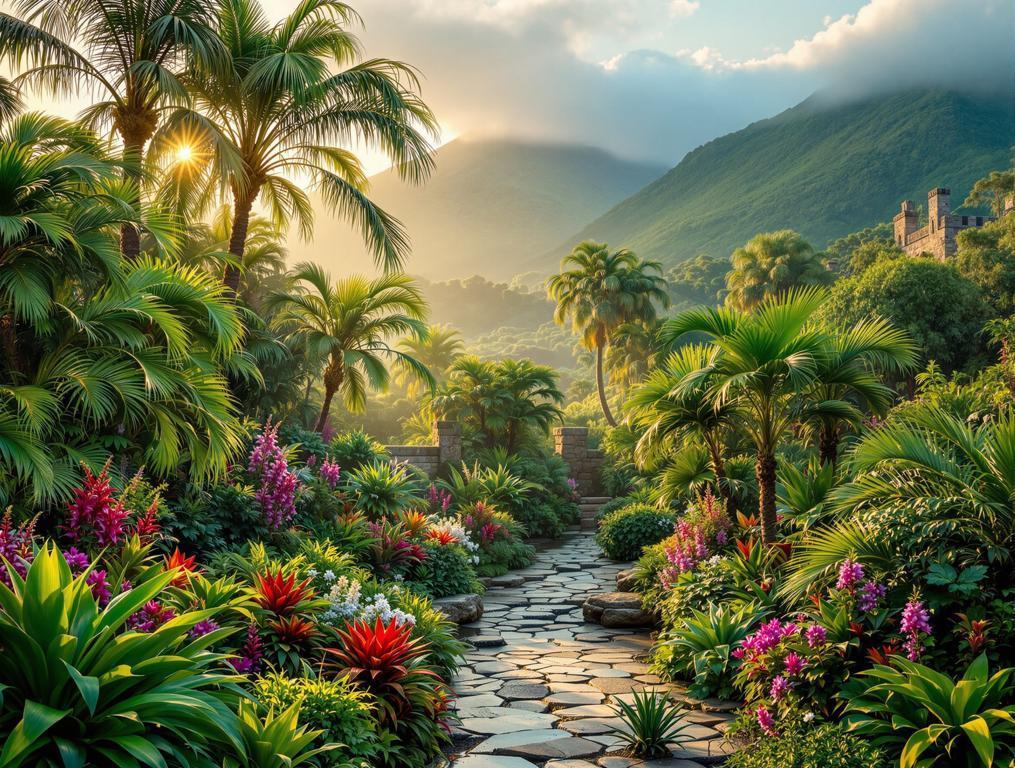I’m standing in a tiny Scottish village where impossible things grow. The main street of Poolewe, population 81, could fit inside a single London subway car. But what these Highland residents guard is extraordinary – a lush 49-acre garden where 2,500 plant species from around the world flourish at a latitude matching Alaska’s frozen shores. I touch a palm frond and pause. This shouldn’t exist here.
Scotland’s Impossible Garden Thrives at 57° North
The morning mist retreats over Loch Ewe as I enter Inverewe Gardens. Created in 1862 by Osgood Mackenzie, this horticultural anomaly remains Scotland’s most improbable botanical achievement. The science behind it is fascinating.
Gulf Stream waters bathe this Highland peninsula, creating a microclimate where California redwoods tower over Himalayan blue poppies. Australian eucalyptus trees share soil with Chilean fire bushes just 10 miles from barren moorland.
My botanical guide points to a flowering rhododendron from the Himalayas. “That species grows at 12,000 feet in Nepal,” she explains. “Here it thrives at sea level because of our unique conditions.”
What makes this place truly remarkable is the contrast. In a region where crofting (traditional small-scale farming) defined generations, this subtropical paradise represents a Victorian experiment that shouldn’t have succeeded.
Locals call it “a’ ghàrradh iongantach” – the miraculous garden. The name fits perfectly as I walk beneath towering palms while Highland cattle graze on hillsides just beyond the walls.
A Botanical Wonder That Rivals Kew Gardens
While 1.8 million visitors crowd London’s Kew Gardens annually, Inverewe offers a similar botanical diversity with a fraction of the visitors. The collection includes plants from 65 countries across five continents, all thriving in Scotland’s far north.
Unlike other exotic gardens in places like certain French villages with architectural marvels, Poolewe’s botanical wonder emerged from barren rock. Mackenzie transported thousands of tons of soil to create planting beds where nothing grew before.
“I’ve seen gardens in Singapore and Hawaii that don’t match what these Scots have accomplished at this latitude. It simply shouldn’t be possible, yet here it is – thriving between mountains and sea.”
July represents the absolute peak viewing window. Like Colorado’s wildflower explosion each July, Poolewe’s subtropical flora reaches maximum vibrancy now. Blue Himalayan poppies, Chilean fire bushes, and giant Gunnera plants create a riot of color.
Scotland’s coast harbors several remarkable villages, from those exporting premium seafood to Europe to Poolewe’s botanical wonder. But what makes this place special is how the garden complements village life.
What the Guidebooks Won’t Tell You
The Tuesday Market in Poolewe Village Hall showcases local artisans selling everything from sea-glass jewelry to smoked salmon. Arrive before 10am to catch the freshest produce and meet actual gardeners from Inverewe.
The gardens themselves open at 9:30am, but locals suggest visiting after 3pm when tour buses depart. The walled garden section offers the most dramatic subtropical specimens.
For a true Highland contrast, take the Kernsary Path – a challenging 6.5-mile trail where you’ll encounter those famous feral goats that roam the hills. The rocky terrain requires sturdy footwear but rewards with views of both lush gardens and wild Highland landscapes.
While Poolewe’s visitor numbers don’t match those of some English villages that host 40,000 annual visitors, the quality of experience far exceeds expectations.
As summer sunlight stretches toward 11pm, I watch shadows lengthen across Inverewe’s palm grove. My photographer wife Sarah captures a red deer silhouetted against subtropical foliage – a quintessential Scottish juxtaposition.
Tomorrow we’ll explore Loch Ewe by kayak, searching for dolphins and tracing the routes of those WWII Arctic convoys. But tonight, I’m still processing how this village of 81 souls maintains one of botany’s greatest triumphs against impossible odds. In Highland tradition, the impossible simply takes a little longer.
